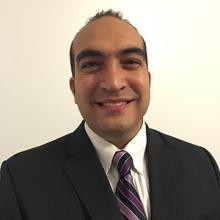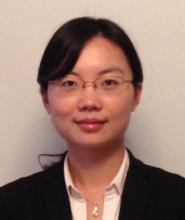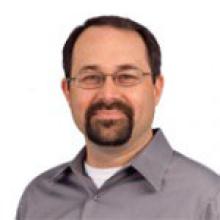Why Did Silicon Valley Develop in the San Francisco Bay Area Instead of the East Coast?

Dr. Don Estreich
Lecturer
Engineering Science Department, Sonoma State University, Rohnert Park, CA
Thu, 04/19/2018
Abstract – Silicon Valley is one of the World’s great success stories in the evolution of technology. The roots and origin of Silicon Valley date back to over 100 years ago. It can be argued that it started with the amateur radio activities, within the San Francisco Bay Area, resulting in the development of world-leading vacuum tube technology that would prove crucial to the war effort in World War II. Stanford University, lead by the work of Dr. Fred Terman, were essential in building the environment necessary for the growth of Silicon Valley. Shockley Semiconductor lead to the founding of Fairchild Semiconductor which resulted in the development of the planar process – it enabled the integrated circuit microelectronic revolution. That in turn drove the rise of the personal computer and eventually to the use of the Internet as we know it today. This talk reviews the history of Silicon Valley and explores why it blossomed in the San Francisco Bay Area and not elsewhere. The key elements in the success of Silicon Valley and why it happened in the Bay Area are discussed.
Dr. Don Estreich is currently an Adjunct Professor in the Engineering Science Department at Sonoma State University. He received the BSEE degree from U.C. Berkeley and the Ph.D. from Stanford University in 1980. During the 1970s he worked in Silicon Valley at Hewlett-Packard Laboratories in Palo Alto. He worked for 30 years at Hewlett-Packard’s Technology Center (later Agilent Technologies) on compound semiconductor integrated circuits and test and measurement instrumentation. He has been with Sonoma State University since 2010.
Product Platforms, Firm Processes, and Firm Performance

Dr. Sergio Canavati
Assistant Professor
School of Business and Economics, Sonoma State University, Rohnert Park, CA
Thu, 04/05/2018
Abstract – How strong is the relationship between an individual’s prior knowledge and the identification of entrepreneurial opportunities, and does the strength of this relationship vary across different dimensions of prior knowledge and types of opportunities (first- and thirdperson)? In addition, how does the interplay of the institutional context and individuals’ prior knowledge lead to the identification of entrepreneurial opportunities? This study examines the role of engineering knowledge, entrepreneurial experience, and formal education in the recognition of opportunity ideas and the formation of individual beliefs about the feasibility and desirability of the opportunity. We find that engineering knowledge and experience has the strongest correlation with the identification of opportunity ideas, but entrepreneurial experience is the strongest predictor of the formation of desirability and feasibility beliefs regarding the opportunity.
Dr. Sergio Canavati is an assistant professor of management at Sonoma State University. His research focuses on entrepreneurial opportunity recognition, family firms, and entrepreneurial leadership. Sergio also collaborates with North Coast SCORE to advice small and medium family businesses in the region. Sergio holds a Ph.D. in Economics and Entrepreneurship & Innovation from the University of Missouri- Kansas City.
Toward the Next-Generation Neural-Controlled Artificial Limb

Dr. Xiaorong Zhang
Assistant Professor
Computer Engineering, San Francisco State University, San Francisco, CA
Thu, 03/15/2018
Abstract – There are over 32 million amputees worldwide whose lives are severely impacted by their limb losses and it is projected that this number will over double by 2050. Thus there is a strong demand to provide this large and growing population of amputees the best care and restoring of function. In recent years, myoelectric controlled prosthetic limb (sometimes referred as “mind-controlled prosthetic limb”), which utilizes electrical activity produced by muscle contractions to identify the user’s movement intentions to control prosthetic arms, has shown great potential in improving the quality of life of patients with amputations by allowing natural, intuitive prosthesis control. The key to the success of neural-controlled artificial limbs is the neural-machine interface (NMI) that collects neural signals, interprets the signals, and makes accurate decisions to control the prosthesis. This talk will discuss the requirements, challenges, design methods, and future trends of NMIs for prosthesis control.
Dr. Xiaorong Zhang is currently an Assistant Professor in the School of Engineering and the Director of the Intelligent Computing and Embedded Systems Laboratory (ICE Lab) at San Francisco State University. She has broad research experience in human-machine interfaces, neural-controlled artificial limbs, embedded systems, and wearable devices. She is a member of IEEE and the Society of Women Engineers (SWE). She has served in the professional societies in various capacities including Associate Editor of the IEEE Inside Signal Processing E-Newsletter, Co-Chair of the Doctoral Consortium at 2014 IEEE Symposium Series on Computational Intelligence, Faculty Advisor of the SWE SFSU Chapter, and Program Committee Member of various international conferences. She received her bachelor’s degree in Computer Engineering from Huazhong University of Science and Technology, Wuhan, China in 2006, and her master’s and Ph.D. degree in Computer Engineering from the University of Rhode Island, Kingston, RI in 2009 and 2013, respectively.
Smart Sensing Systems and Analysis of Exhaled Breath for Detecting Diseases

Dr. Sudhir Shrestha
Assistant Professor
Engineering Science Department, Sonoma State University, Rohnert Park, CA
Thu, 03/01/2018
Abstract – Smart sensing systems employ an array of sensors, and advanced data analysis methods for making sense of the information gathered by the sensors. This presentation will discuss recent progress on sensing systems for analyzing exhaled human breath and monitoring health status of a patient. The human breath contains a large number of compounds that carry important health information. For example, changes in the level of certain compounds in exhaled breath have been linked to the changes in blood glucose levels. Developing a system that detects blood glucose levels from exhaled breath of a patient involves recognizing the compounds, manufacturing a sensor array to sense them, and formulating a hardware and computational solution that produces an actionable output. This presentation will discuss recent results from the presenter’s team in that effort. In addition, recent efforts in developing sensing systems to monitor ambient air quality will be discussed.
Dr. Sudhir Shrestha is an Assistant Professor in the Department of Engineering Science at Sonoma State University. He received his Ph.D. from Louisiana Tech University, Ruston, LA in 2009. Prior to joining SSU, he was with Miami University, Oxford, OH and Indiana University-Purdue University Indianapolis (IUPUI), IN. He has several years of postdoctoral and industry experience. Dr. Shrestha's research aims to develop Smart Sensing Systems for health and other applications.
How Technology Helps Save the World's Most Valuable Resource

Mr. Peter Carlson
Chief Technical Officer
HydroPoint Data Systems, CA
Thu, 02/15/2018
Abstract – Water is one of the world's most valuable resources, especially as locations like Cape Town, South Africa close in on Day Zero, the day they run out of water. HydroPoint is a smart water management company helping to solve the water scarcity issue by combining Internet of Things devices with Big Data technology. We manage millions of data points every day to create intelligent irrigation schedules, find leaks and breaks, and reduce water waste. We use analytics to convert data into actionable knowledge that provides our customers with interactive dashboards that deliver real-time reports and notifications and mobile apps that help manage their water demand systems. Learn more about how the latest technologies are helping to save the world's most valuable resource.
Mr. Peter Carlson is a co-founder of HydroPoint. He has 15 years of experience using distributed data systems and scalable Softwareas- a-Service solutions to build IT products and services for enterprises ranging from small to Fortune 500. Previously, Peter was VP of engineering at Shaman Corporation, providing industry leading, award-winning IT data services. Prior to Shaman, Peter held environmental management positions at UC Berkeley. Together with Chris Spain, Peter holds a patent on Controlling a Resource Demand System. He is an Assistant Scoutmaster for the Boy Scouts, and splits his remaining spare time between snow camping in Yosemite National Park and scuba diving in the Caribbean.